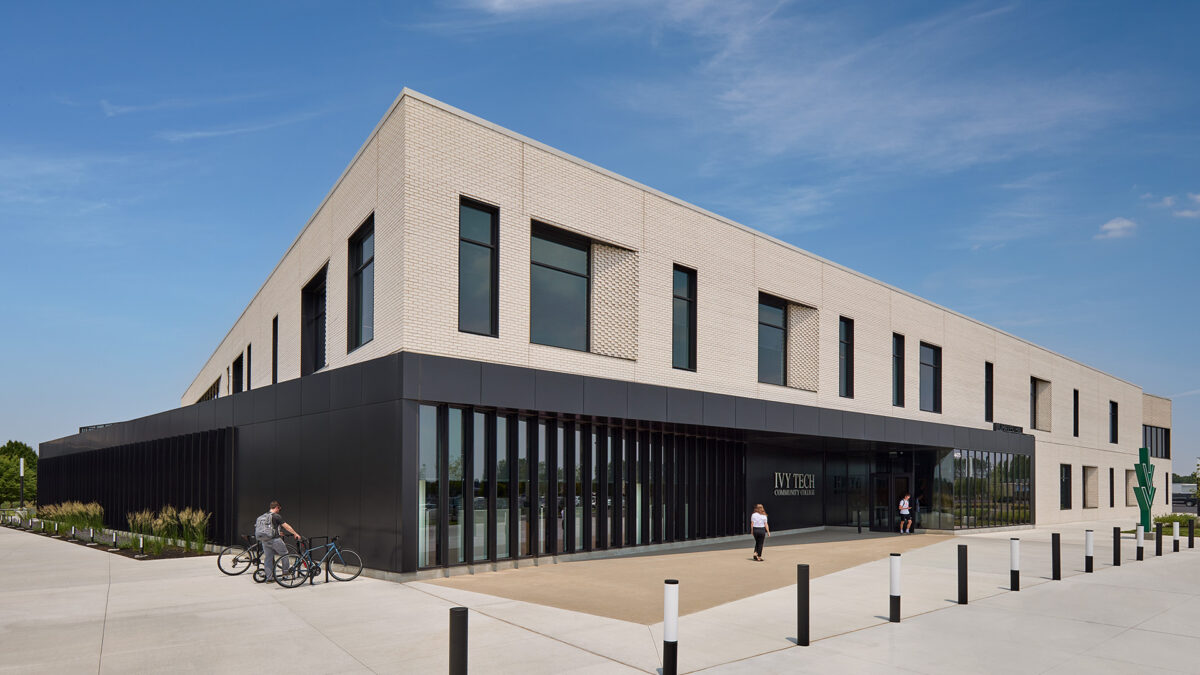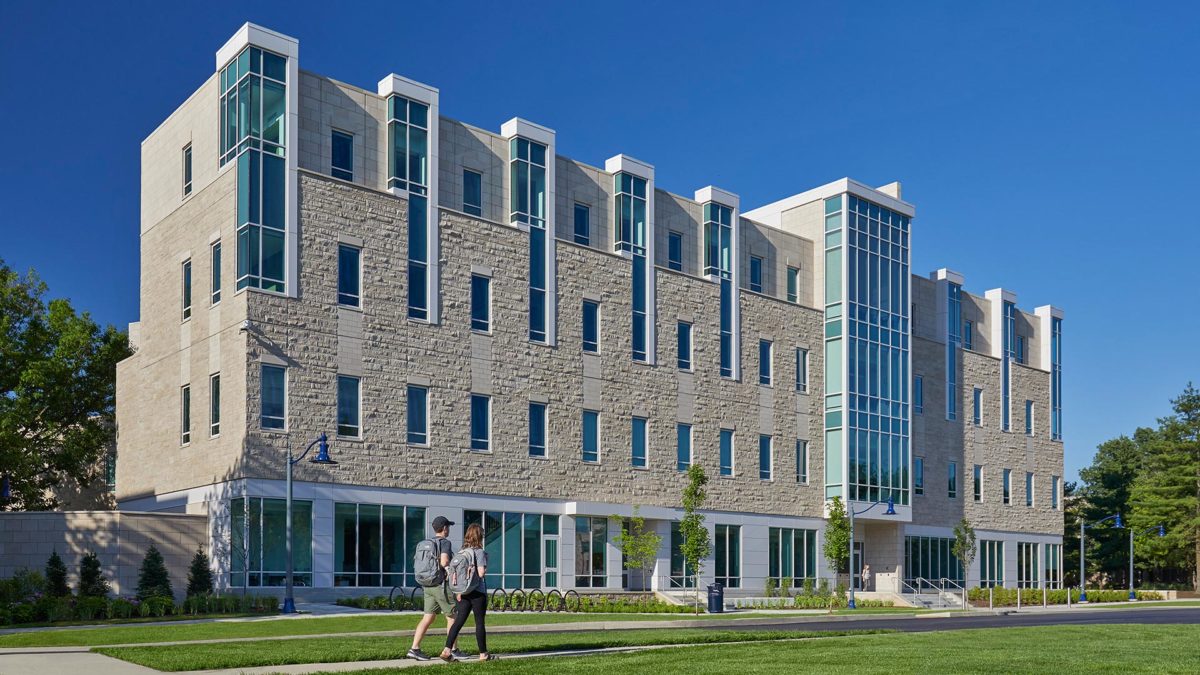
The design features innovative spaces for experiential learning, including: flexible classrooms where local professionals teach workplace-style classes, centers staffed by organizations that involve students in research and outreach, and collaborative workspaces where students develop their own business in concert with experts from the region. The building represents Butler’s competitive distinction from its peer institutions by making activities and interaction immediately visible and central to students’ experience. The design provides visibility by creating transparent spaces that invite participation in central locations around the multi-story atrium at the heart of the building. In addition, the central, broad, open stairs and generous balconies encourage creative collisions as students, faculty, and visitors move and interact throughout the building.
The Innovation Commons, which opens onto the central atrium, is equipped for students to start and run their own businesses as well as a wide range of other types of experiential learning. The Centers, distributed around the main level, provide space where business professionals, faculty, and students work together to solve business challenges. Glass overhead doors open to connect to the atrium and convey the importance and vitality of that work to the school and its guests.
The Butler Business School is named in honor of Andre B. Lacy, a local, successful entrepreneur and philanthropist, as well as a committed family man and daring adventurer. CSO’s interior design studio honored his life with a series of installations that incorporate a collection of custom-designed icons representing his many facets. The icons appear throughout the building as design elements in areas such as the rug in the main atrium and small medallions that are hidden throughout the building. A timeline of his life takes the form of 25 envelopes, connecting his first job in a mailroom and the endowment gift, reminding students that their humble beginnings can build to something great. The design team also featured objects that were important to Lacy – the time clock Lacy once used to clock into his job and the motorcycle he rode across continents. These were both gifts from the family who were intimate collaborators on the project. The conference table in the board room adjacent to the Dean’s office features the Lacy family knot and is a duplication of a table that exists at Lacy’s corporate headquarters.
Located in a prominent place on the campus, visible from the east entrance, the building completes the cross axis of the original campus masterplan. The building’s vertical towers and active silhouette reflect the characteristics of the much-loved historic campus. The building replaces a parking lot and defines the intersection of the two major green spaces at the center of the campus. CSO completed this project in collaboration with Goody Clancy.
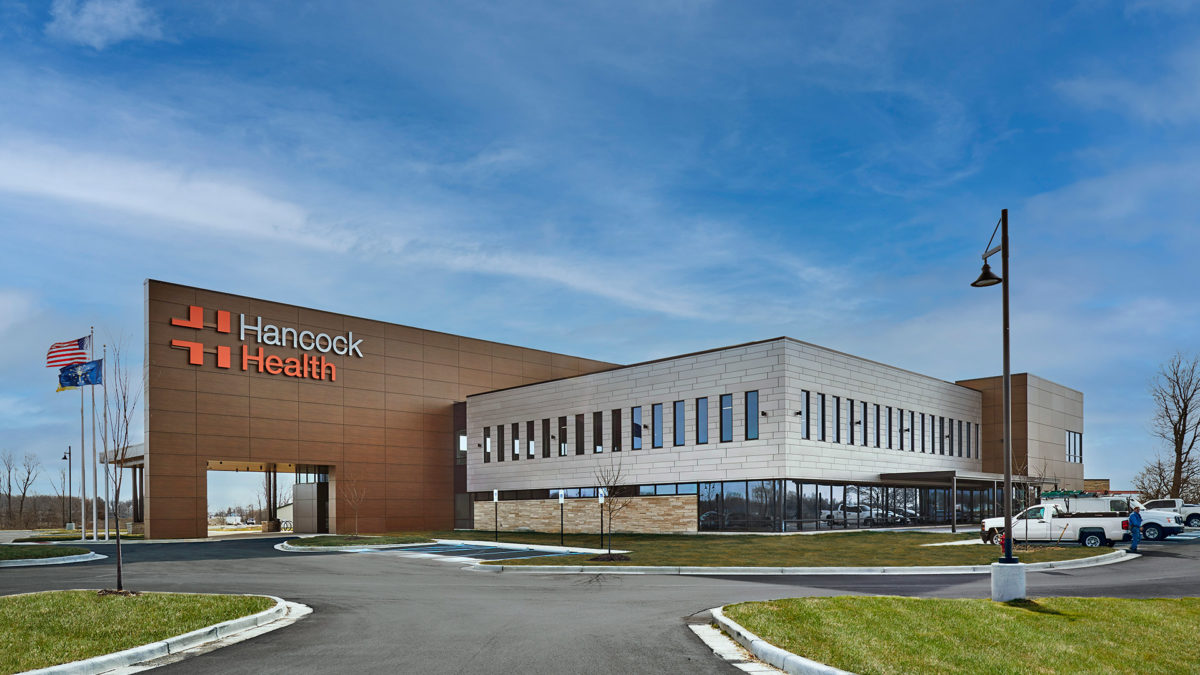
CSO conducted extensive visioning sessions with administrators, doctors, nurses, community members, and others in order to capture the spirit of Hancock Regional Health (HRH) and the people who would use this new campus.
Phase I of the project is the Gateway Clinic, which provides urgent care, imaging services, and a lab. The waiting area embraces updated concepts and offers café and lounge seating, encouraging patients to work or play while waiting for their appointments. The idea for this café-lounge waiting area became the backbone of the design and drove the architecture from the inside out. Working closely together, interior designers and architects were able to create a building that prioritized the needs of the community, patients, and employees without sacrificing efficiency or design aesthetic.
Another key component of the Phase I design was to plan for their anticipated growth. The second floor of the Gateway Clinic was left as shell space during the initial programming to accommodate future growth. As a follow-up to the initial planning, CSO worked with leadership to design and buildout the second floor just few years after they initially occupied the space.
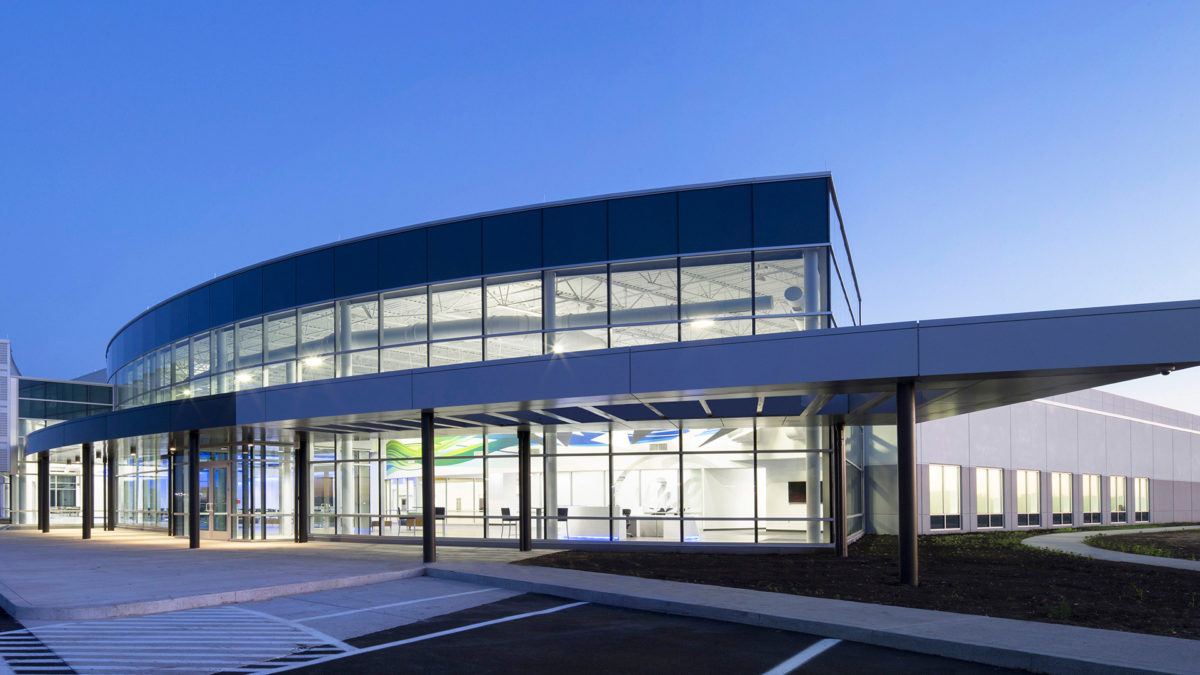
The GE Aerospace LEAP Engine Facility is the second of its kind in the United States and the third project of this type CSO has designed for GE. The facility features some of the most advanced manufacturing techniques in the world and represents a major milestone in technology development in this country.
The 35’ clear height manufacturing space included 80’ structural spans with 12.5 ton beam cranes, 10” thick, ultra-flat, polished concrete floors and generous amounts of natural light provided by expansive clerestory windows. The tiered ceiling panels within the assembly space help humanize the scale. They serve as a space transition and a subtle representation of flight. The finishes are intentionally light, clean, and neutral. This notion relates directly to the GE brand and the idea of intentional design without compromise.
The office/administrative portion of the building was designed to express the aerodynamic curvature and the composite construction techniques of the LEAP engine, most notably its fan blade, by dramatically incorporating several overlapping layers of sinuously curved metal, glass, and steel.
The interior design reinforces the intentional nature of the engine while embracing the technology. The central greeting point is a reception desk designed as a seamless, clean cone and constructed of solid surface. Beautifully crafted metal composite triangles are suspended above the reception desk representing the combustion technology present within the LEAP engine. In addition, this sculptural element contributes to the notion of movement so dominantly present within the architecture.
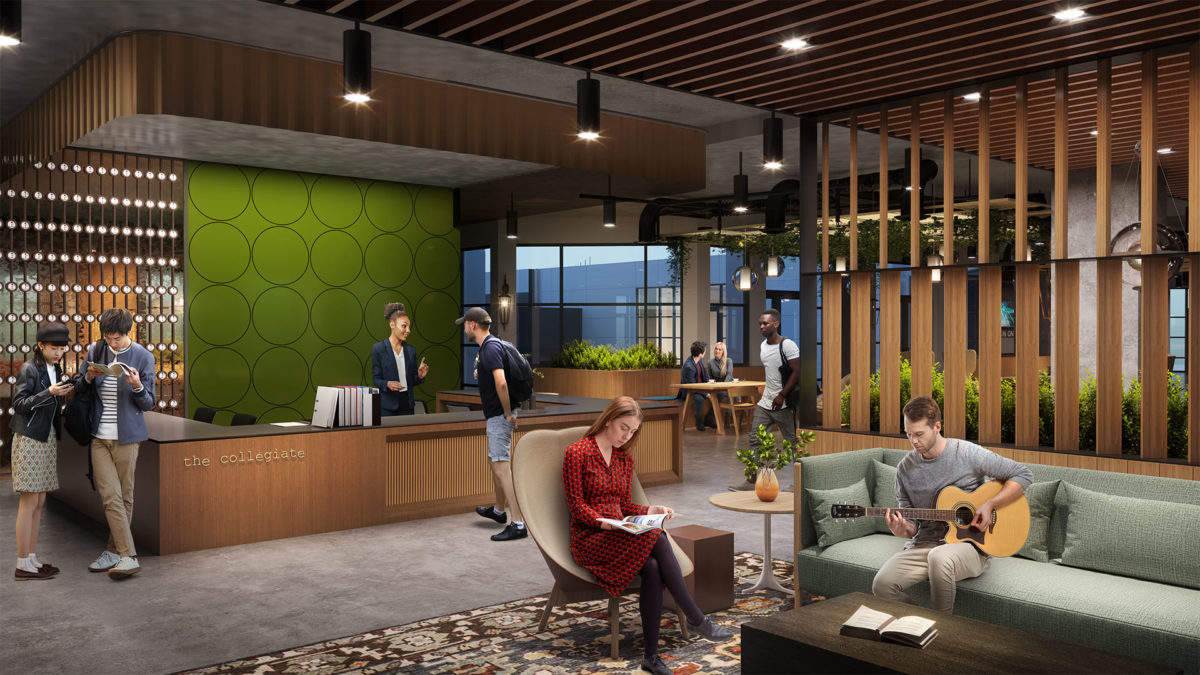
The upscale, 313-unit, 799-bed community will offer a mix of fully-furnished 1,2,3,4, and 5-bedroom apartments. It will feature luxury amenities, including a clubhouse with a large community kitchen, game and study lounges, an entertainment & media area, plus an extensive exterior courtyard & pool deck with grilling stations, tables, lounge areas and fire pits.
The first floor of the building will promote a walkable, vibrant, human scale, pedestrian-oriented streetscape with detailed paving patterns, canopies, and street trees, enlivened with 10,000 square feet of leasable retail space and leasing offices.
The exterior design of the structure was developed with materials and punched window openings to compliment the adjacent Haymarket District, while also expressing the diversity of the modern residential living unit types within. The varying offsets in the building’s façade planes and heights serve to effectively break up the mass of the building to create a more vertical emphasis and more pleasing proportions for the large structure.
The palette of exterior finish materials will also compliment the historic neighborhood while expressing its current time. The top of the building contributes to the skyline of downtown Lincoln with a distinctive, yet restrained modern interpretation of the historic cornices found in the adjacent Haymarket District.
